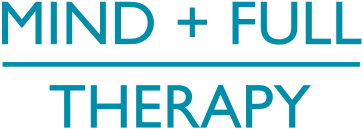Embracing Uncertainty: The Wisdom of “Sāi Wēng Lost His Horse” for Healing and Mindfulness (downloadable exercise)
In Taoist philosophy, there’s a well-loved proverb: “Sāi Wēng lost his horse.” At first glance, it sounds like bad news. But the deeper meaning unfolds in the story behind it.
Sāi Wēng, an old man living near the northern border, owned a prized horse. One day, the horse ran away into enemy territory. The villagers came to console him, saying, “What bad luck!” But Sāi Wēng only smiled and said: “Who knows if it’s good or bad?”
Weeks later, the horse returned and brought with it another beautiful horse from the wild. The villagers now said, “What good luck!” Again, Sāi Wēng replied: “Who knows if it’s good or bad?”
His son began riding the new horse, but fell and broke his leg. The villagers shook their heads: “What bad luck!” Once more, Sāi Wēng said: “Who knows if it’s good or bad?”
Soon after, war broke out, and all the young men were called to fight. Many never returned, but Sāi Wēng’s son, with his injured leg, was spared.
What This Teaches Us About Mindfulness and Non-Attachment
This story reminds us that life is full of events we rush to label as “good” or “bad.” The truth? We often can’t see the full picture in the moment.
In mindfulness practice, this is called non-attachment, not clinging to the “good,” not pushing away the “bad,” but meeting life as it is.
My Own Reflection
I started meditation in grad school and have now practiced for 17 years. I also teach mindfulness skills in therapy, because they’re essential in healing trauma, anxiety, and depression. As the Buddhist teaching says: “Not accepting what is equals suffering.”
We suffer when we resist reality…living in the past, worrying about the future. Meditation is long-term brain training for being present.
Non-attachment doesn’t mean you stop caring. It means you can respond from present-moment awareness rather than react from fear or old pain.
A Trauma-Informed Approach to “Who Knows if It’s Good or Bad?”
If you’ve experienced trauma, this practice must be approached with care. Mindfulness here is not about forcing yourself to see abuse, loss, or pain as “good.” It’s about creating space so that the painful event is not the only truth you hold in the moment.
What Does “Creating Space Around the Experience” Mean?
Noticing Without Being Flooded: Instead of being swallowed by painful memories, you observe them like ocean waves, rising and falling without drowning in them.
Seeing the Experience as one part of Your Story: The abuse was one chapter, not the entire book of your life. This doesn’t diminish what happened, it widens the frame.
Separating “You” from “What Happened”: The event is something that happened to you, not the definition of who you are.
Reducing Automatic Reactivity: By creating space, your nervous system can settle, giving you more choice in how you respond.
Inviting Gentle Curiosity and Compassion: You can acknowledge your pain without self-judgment or avoidance.
What’s the Goal in Practice?
To increase your sense of safety and control with difficult memories.
To expand your capacity to be present without being overwhelmed.
To cultivate self-compassion as you hold your experiences.
To build resilience by practicing responding rather than reacting.
A Simple Practice Inspired by the Story
Notice the Label: When something happens, catch yourself labeling it “good” or “bad.”
Pause & Breathe: Give yourself a few slow breaths.
Ask the Question: Silently say, “Who knows if it’s good or bad?”
Zoom Out/Create Space: See this event as one moment in your larger life story. Recall other times when “bad” led to growth or “good” brought challenges.
Ground in the Present: Use your senses to return to this moment.
Respond, Don’t React: Choose a response aligned with your values.
Welcome the Unknown: Remind yourself, “I can trust myself to meet what comes.”
If you’d like a printed version of these practices, you can download A Mindfulness Practice for Tolerating the Unknown here. A gentle guide to help you meet the unknown with curiosity and care.
Why This Helps the Nervous System
When you step back from instant judgment, you reduce the intensity of your fight-flight-freeze response. This allows your body to shift toward a calmer, more regulated state, which is essential for trauma healing.
Like Sāi Wēng, we can learn to meet life with humility and openness. “Who knows if it’s good or bad?” is not about denying reality…it’s about leaving space for the unexpected ways life can unfold, and meeting it from a grounded, compassionate place.
If you’ve experienced trauma and want to explore how mindfulness can support your healing, we offer therapy that blends evidence-based trauma treatment with gentle, practical mindfulness skills. Together, we can work at a pace that feels safe for you, creating space around painful experiences while building your capacity for calm, clarity, and self-compassion.
Mind+Full Therapy – Trauma-informed therapy for healing and growth


